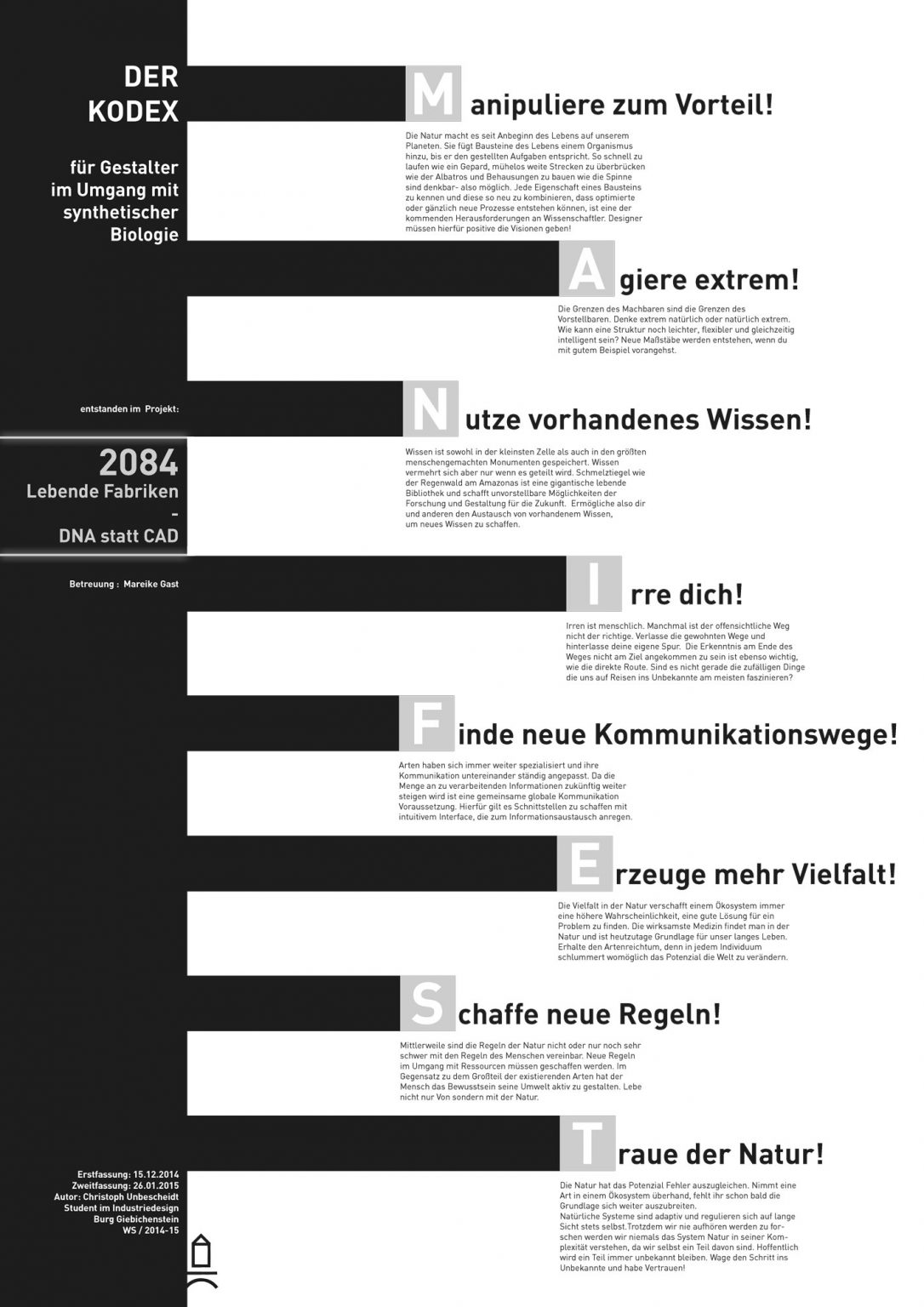NextSense
The human is not yet complete!
In 2084 every organism known to us is genetically decoded. All this information about the specific properties of the organisms is stored in a huge database and is available to us. With the help of synthetic biology it is possible to design adaptive products for the human body. For example, the highly sensitive properties of a dog’s nose can be transferred to a synthetic organism, which can then be used for us humans. So we can expand our body and improve our senses. Our goal is not to genetically improve the human being itself, but to design adaptive systems (genetically optimized organisms) that are attached to the body and live in symbiosis with us.
VISION:
night sight bio device
In the deep sea there is complete darkness for humans. But there are creatures that have adapted to these extreme conditions. One of these creatures is a small transparent shrimp (Paraphronima gracilis), which can perceive light photons with the help of small light-sensitive retinal cells. The captured light travels to each retinal cell through transparent facets (ommatidia) that protect the eye.
The aim is to make processes currently invisible to humans visible.
AROMA:
Absorb, store and release odours
The sense of smell is the most complex chemical sense. It is already largely developed at birth. We take odours both consciously and unconsciously in the form of pheromones. These influence sexual behaviour, sympathy and antipathy and social contacts. The aim is to recognise pleasant odours, to store them and, if necessary, to release them more strongly.Researchers have discovered that certain bacteria (Bacillus licheniformis) can perceive odours and react to changes. The idea is that the bacterial structures produce metabolic products such as pheromones during growth. The user can store pleasant odours at any time and release them at the desired time.
PULSE:
Electrocommunication (electrical information transfer) is a form of communication found in various species of weakly electric fish and is based on the generation and emission of electrical impulses of various frequencies. These are generated by electrical organs, which are usually located in the caudal region of the body. The signals are picked up by corresponding electroreceptors (electro-location) in the skin of the electric fish (electro-sensory system). The electrocommunication is based on the detection of the organ discharges, the communication partners and an adequate reaction to them. Weakly electric fish discharge their organs in a continuous rhythm: however, the frequency patterns of the electric organ discharge are variable and depend on the respective behaviour. In this way, two animals (within a species, but also between species) can respond to each other by changing the frequencies.
Manifest by Martin Schmidt

Manifest by Christoph Unbescheidt

| student: | Martin Schmidt & Christoph Unbescheidt |
| project: | 2048 |
| year: | 2014/15 |
